
Cubo住宅|Casa Cubo / PHOOEY Architects. Image © Peter Bennetts Photographer
哪些材质最容易回收?
Which Materials are Easiest to Recycle?
由专筑网小R,王雪纯编译
75%的地球自然资源都消耗于建筑行业。石头、沙子、铁等其他许多有限的资源都供应于建筑市场之中。除此之外,无论改造、拆除,还是新建,施工场地总会产生大量的废物。举例来说,巴西的建筑垃圾占城市固体垃圾总量的一半以上[1]。这些废物的处理方式一般是填埋或是堆放,而这些处理方式直接影响着整个城市的卫生体系。
The construction industry is responsible for 75% of the consumption of earth's natural resources. Stone, sand, iron, and many other finite resources are extracted in huge quantities to supply the markets. Additionally, construction sites themselves generate enormous quantities of waste, whether through construction, demolition, or remodeling. In Brazil, for example, construction waste can represent between 50% and 70% of the total mass of municipal solid waste [1]. This waste often ends up in landfills and dumps rather than being properly disposed of, overwhelming municipal sanitation systems and creating informal disposal sites.

建筑边角料的材料立面仓库|Storage Barn / Gray Organschi Architecture. Image © Bo Crockett
如果采用正确的措施,那么这些废物就能够进行重新再利用,因为这些材料中能够提取到可用的部分,并且在保证使用质量的前提下应用在新建筑之中。
If more care is taken, however, this waste could have enormous potential for reuse. If given proper destinations and processed correctly, recycled materials can replace those extracted from deposits to form new building components, maintaining a quality generally comparable to traditional materials.
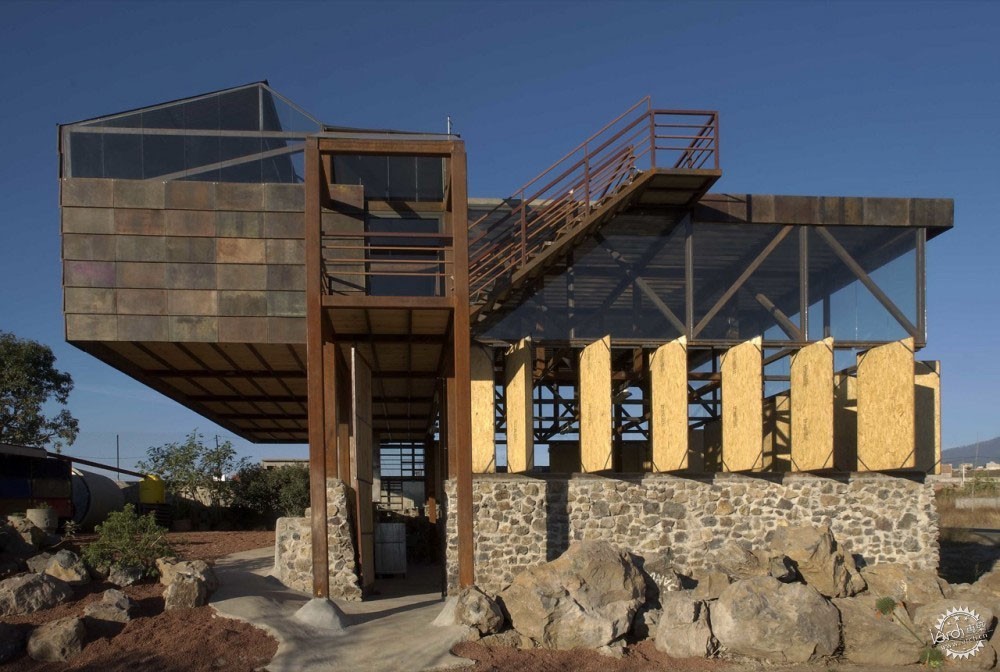
Estudio Cinco / T3arc. Image © Luis Gordoa
回收是将废弃的材料进行再利用,让它们重新进入生产的过程。这个过程能有效减少了原材料的消耗和废物的总量,同时也给社会带来了大量的就业机会。如果要有效地开启这个过程,那么就需要进行废物的分类和回收,每个地区的分类方式不同,但是大体分为两个部分,首先是大部分的建筑垃圾,例如混凝土、陶瓷、石材、砂浆等等,另一部分则是木材、金属、玻璃、塑料、石膏等等。下文列出了一些常见材料的回收与再利用方式。
Recycling is the process of reusing discarded materials to reintroduce them into the production cycle. This process reduces the consumption of raw materials, decreases the total volume of waste, and can create jobs for thousands of people. To start the process, an efficient separation and collection system is essential. Although the classifications are different in every country, two major classes generally exist. The first includes concrete, ceramics, stone, and mortar, which represent most construction waste. The other class concerns wood, metal, glass, plastic, plaster, and more. Here are the most common materials to recycle and what uses they often have:
钢
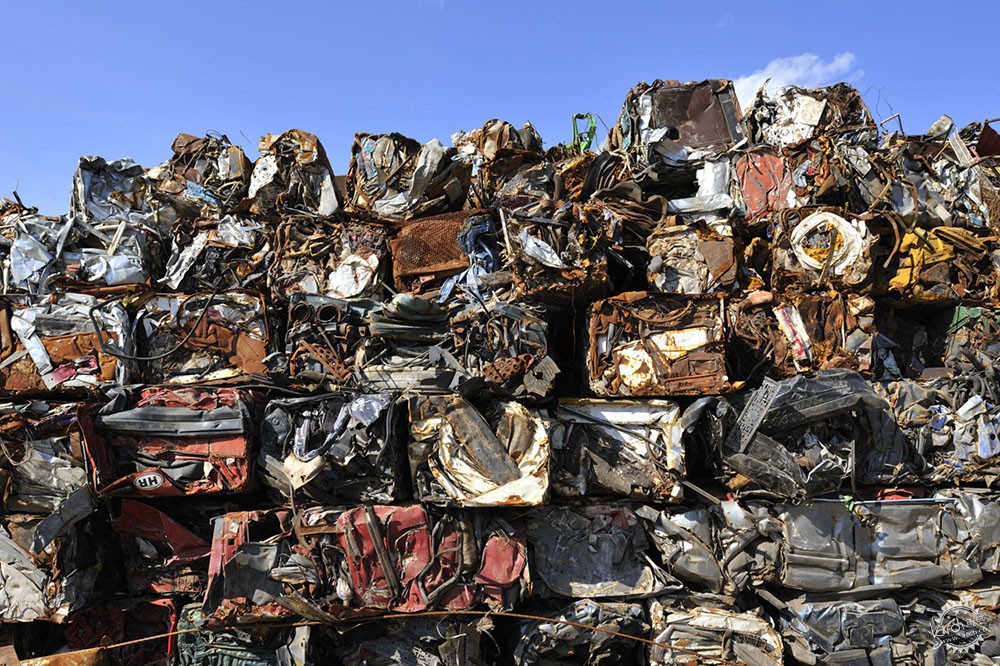
金属回收厂|Metal Recycling Plant / dekleva gregoric architects. Image © Miran Kambič
钢材由铁矿石和煤高温炼制而成,也可以通过回收废弃钢材在电炉中制作而成。钢材的回收历史可以追溯到古罗马时期,当时士兵们会收集战场上所留下来的武器,然后炼成新兵器。其实,钢材可以不断地进行转化,在回收之后,电力的消耗能够降低80%,对环境的影响也更小一些,因此可以不需要完全依赖于原材料的提炼。
Steel
Steel can be made from the combination of iron ore and coal, which is heated in a blast furnace, or by recycling scrap, which is made in an electric furnace. The recycling of steel goes back to the Roman Empire, when soldiers collected instruments of war left in trenches to produce new weapons. In fact, steel can be endlessly transformed into new objects without loss of quality. When recycled, the consumption of electricity lowers by 80%, causing a lower environmental impact and eliminating completely the extraction of raw materials.

纽约“零浪费”酒馆|Restaurante Zero Waste Bistro / Linda Bergroth. Image © Nicholas Calcott
钢筋混凝土中所应用的钢筋、电线、钉子,以及一些金属材料常常都由废弃金属制作而成。
Rebar for reinforced concrete, wires, nails, and some metal profiles are generally made from scrap metal.
混凝土

© Apt and Huguet
回收的混凝土能够让建筑垃圾重复利用,有效地降低建筑成本。在硬化混凝土的回收之中,可以使用一种特殊的机器生产“再利用骨料”。近年来,回收混凝土只应用在材料的底层,但是有数据表明,通过适当的技术,混凝土骨料可以创造压强在30至40MPa的结构元素。更重要的是,回收骨料相比起初凝混凝土,其每个单位的重量大约轻10%至15%,因此回收骨料的运输、施工成本都较低一些。
Concrete
Recycling concrete allows construction waste to be reused and construction costs to be reduced. In recycling hardened concrete, a special crusher is used and produces what is known as “recycled aggregate”. Until recently, recycled concrete was only used as a subfloor. But tests are showing that concrete aggregate can create structural elements from 30 up to 40 MPa with the right technologies. Importantly, recycled aggregates are also anywhere from ten to fifteen percent lighter per unit of volume than virgin concrete, which entails less weight per cubic meter and thus less material, transportation, and overall project costs.
木材
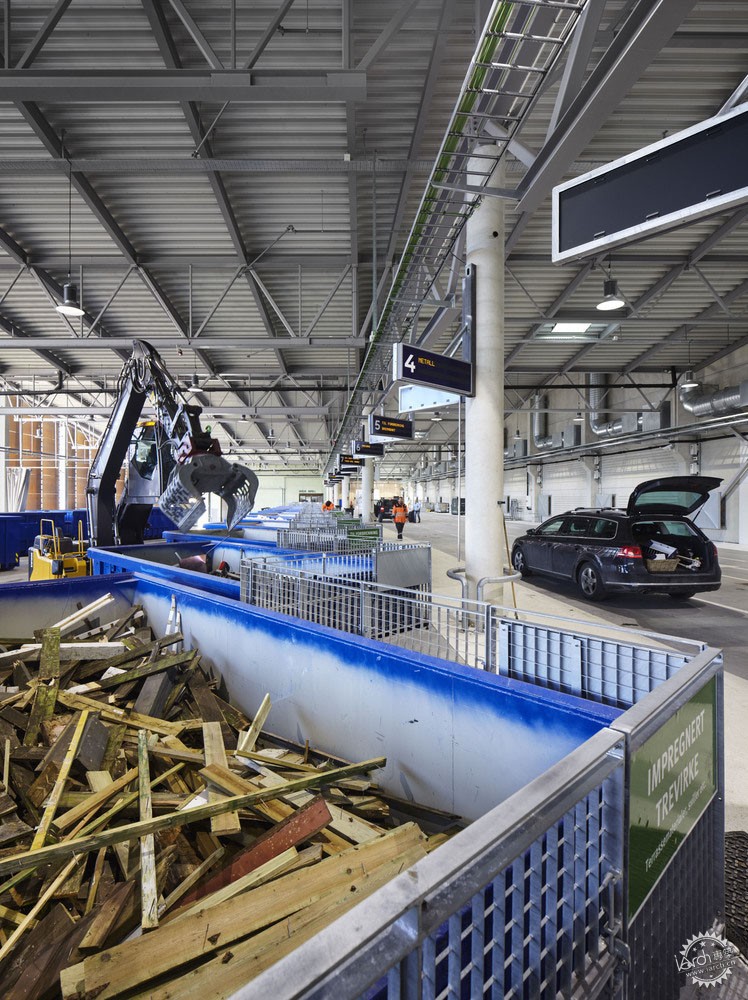
奥斯陆Smestad回收利用中心|Smestad Recycling Centre / Longva arkitekter. Image © Ivan Brodey
“再生木材”的使用已经变得很流行,保存良好硬木能够存放数百年。再生木材适用于大型的结构构件和面板,例如板条箱、运货板、支架等等。但是,柔软、廉价的木材同样可以用作原材料面板而回收再利用。再生木材最为常见的功能是木材的研磨和中密度纤维板的制作。
Wood
Using “reclaimed wood” has become quite popular. Hardwoods can last hundreds of years, if kept properly. They can be used in large structural parts or as slats for the manufacture of other artifacts such as crates, pallets, or supports for various purposes. But even softer, cheaper woods can be recycled, especially as a raw material for the panel industry. The most common use of recycled wood today occurs with the complete grinding of wood and manufacture of MDF sheets for the production of woodwork.
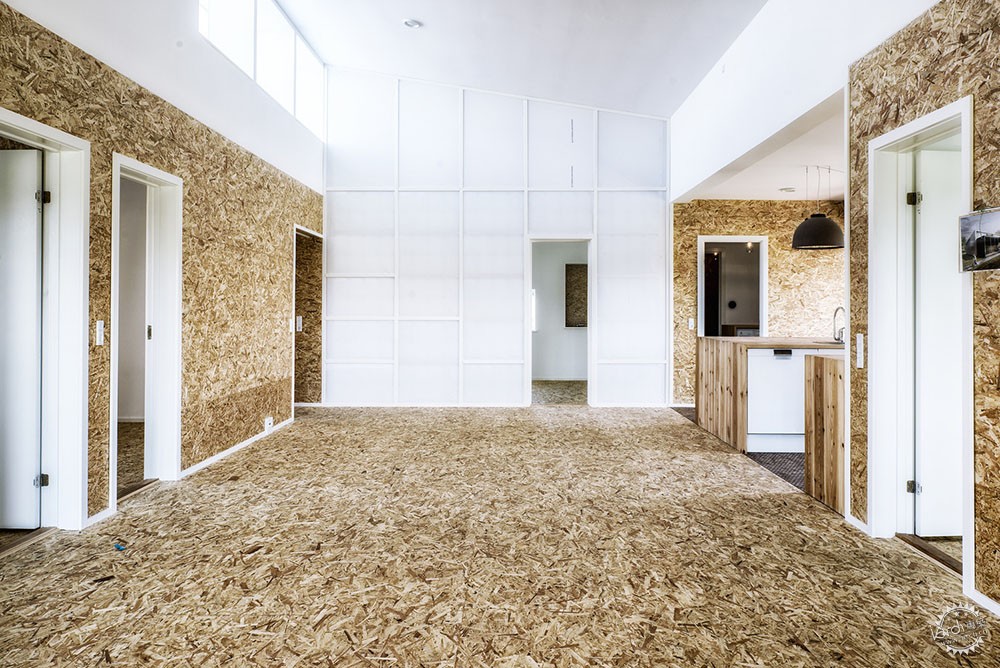
丹麦Upcycle屋|Casa Upcycle / Lendager Arkitekter. Image © Jesper Ray
另外,还可以在工业炉中焚烧木材废料来降解木材垃圾。
Another option, if none of the above processes can be applied, is to dispose of wood waste for biomass production by burning it in industrial furnaces.
石膏
石膏同样可以回收,但是如果处理不当,这种材料会排放出易燃且具有毒性的化学物质,从而污染土壤和地下水资源,如果能够妥善处理,并且保持回收石膏的物理性能,就能减少成本。
Plaster
Recycling plaster in construction is feasible, but if it is improperly disposed of, it can emit flammable and highly toxic hydrogen sulphide, contaminating the soil and groundwater. However, if suitably processed, recycled plaster retains the same physical and mechanical characteristics as conventional plaster at a relatively low cost.
EPS
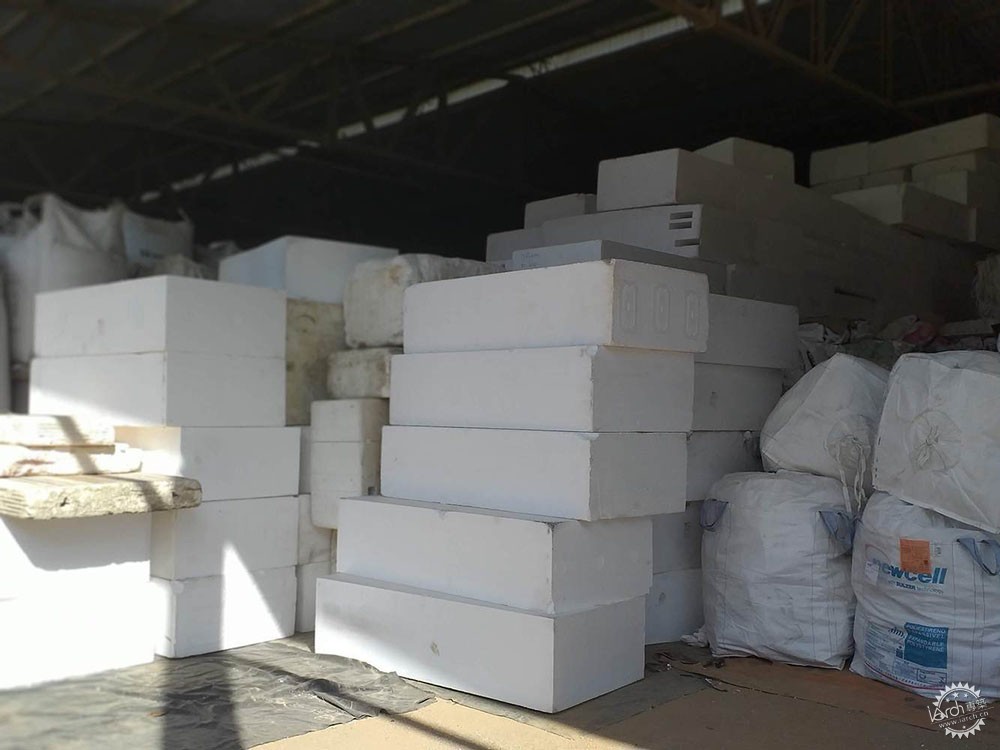
Cortesia de Santa Luzia
聚苯乙烯泡沫,简称EPS,也是可循环利用的材料。EPS经过粉碎、压实后能够制造全新的塑料产品,这种材料可以用于制作面漆或者油漆。
Expanded polystyrene, or EPS, is a material that can be recycled as well. EPS becomes a raw material for the manufacture of new plastic products when it is crushed and compacted. It can be used for finishes or even paints.
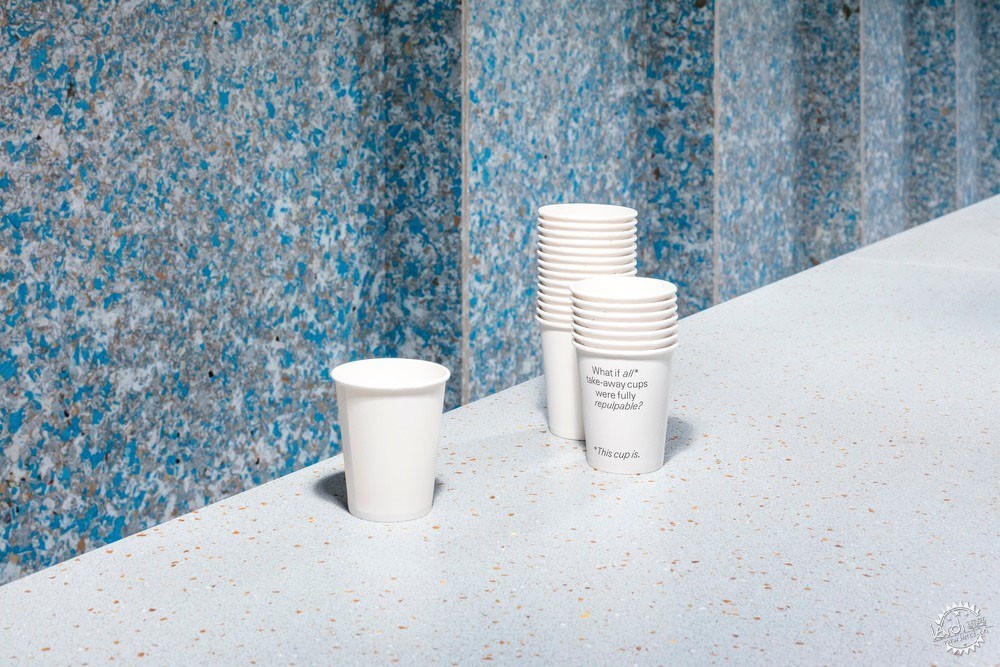
纽约“零浪费”酒馆|Restaurante Zero Waste Bistro / Linda Bergroth. Image © Nicholas Calcott
玻璃
玻璃瓶是高度可回收的东西,但是玻璃窗的回收则面临着一系列的复杂问题。由于不同的化学成分和熔化温度,玻璃窗无法和其他的玻璃制品一起回收,如果窗户是不同类型的也不行。但是,窗户的玻璃可以经过熔化而制造成玻璃纤维,然后与沥青结合使用,或是用作黄白反光道路漆。碎玻璃也可以和混凝土共同使用,从而制造地板和花岗岩台面。
Glass
Although glass bottles and containers are highly recyclable, the recycling of window glass faces a series of additional complications. Due to its different chemical composition and melting temperature, it cannot be recycled alongside other glass objects, including other types of window glass itself. Window glass can, however, be melted and remanufactured into fiberglass, to be incorporated into asphalt or even combined in yellow and white reflective road paints. Broken glass can be combined with concrete to create floors and granite countertops as well.
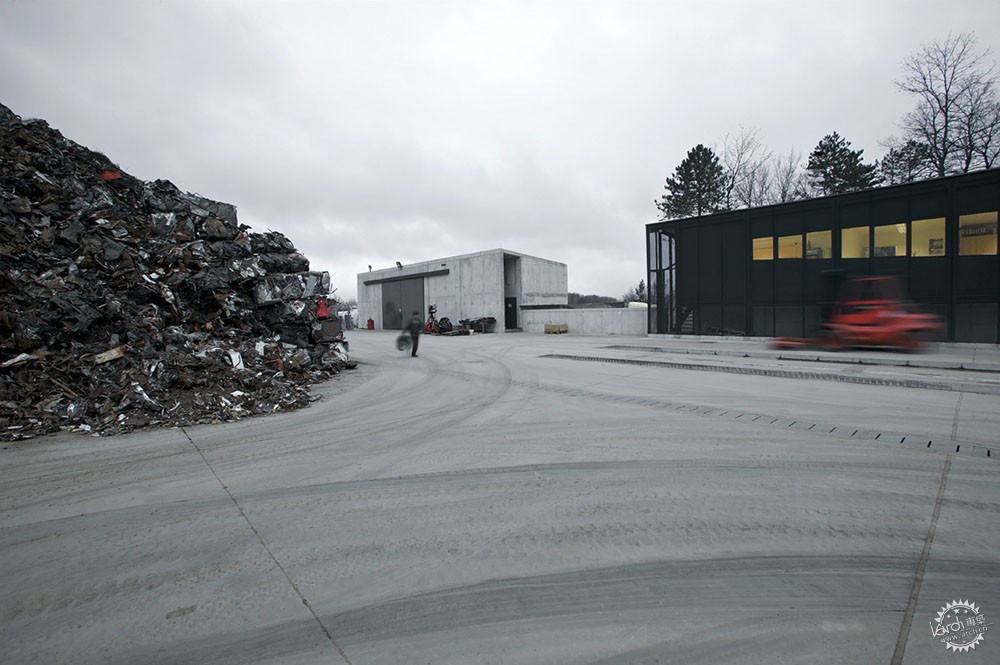
金属回收厂|Metal Recycling Plant / dekleva gregoric architects. Image © Miran Kambič
锌板、铝板、包装、织物,这些材料同样也有回收再利用的价值与可能,当然,诸如石棉、乳胶漆、化学溶液、粘合剂、铅涂料等材质则需要经过谨慎地对待,这样才能减少对于环境的负面影响。人们对于可持续发展的意识逐步提升,因此材料的寿命周期则变得愈发重要。人们应该减少废弃材料的堆放与填埋,利用回收再利用的方式来减少环境压力与成本,同时也能够有效地减少人们对于自然资源的需求,降低运输与生产成本。
Zinc, aluminum, packaging, fabrics. These additional materials may also have reuse and recycling options. Of course, there are also substances such as asbestos, latex paint, chemical solvents, adhesives, and lead-based paint that need to be treated carefully to reduce their impact on the environment. With growing concerns about transforming the built environment to be more sustainable, thinking about the entire life cycle of a material becomes vital. In addition to reducing the chances of dumping in clandestine locations and helping to relieve pressure on landfills, recycling can lead to lower costs for both the environment and the consumer. In addition, it reduces the demand for new natural resources, reduces production and transportation costs and eliminating the need to send waste to landfills.
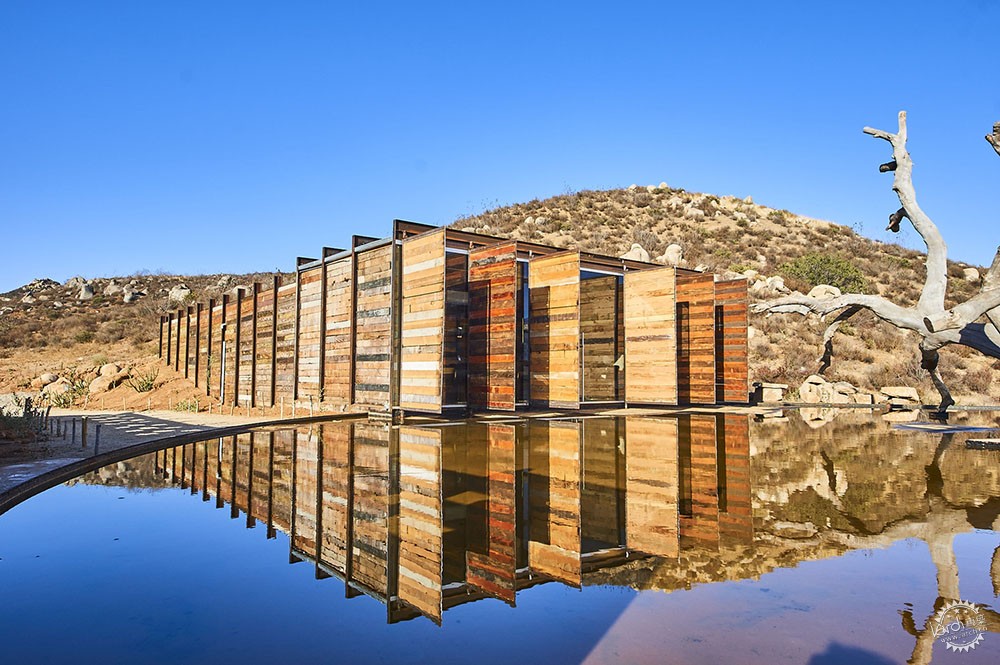
墨西哥BRUMA酿酒厂改造|Vinícola BRUMA / TAC Taller de Arquitectura Contextual. Image © Humberto Romero
注释
Notes
[1] http://www.ipea.gov.br/portal/images/stories/PDFs/relatoriopesquisa/120911_relatorio_construcao_civil.pdf
|
|
